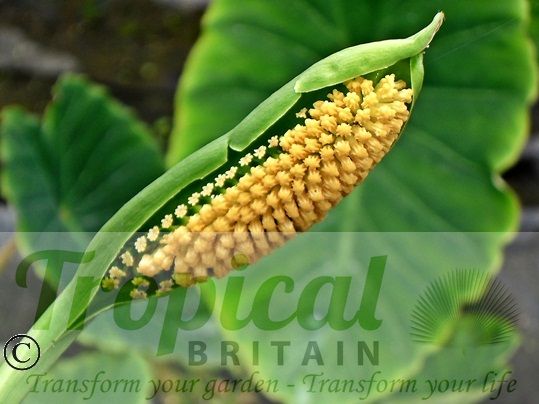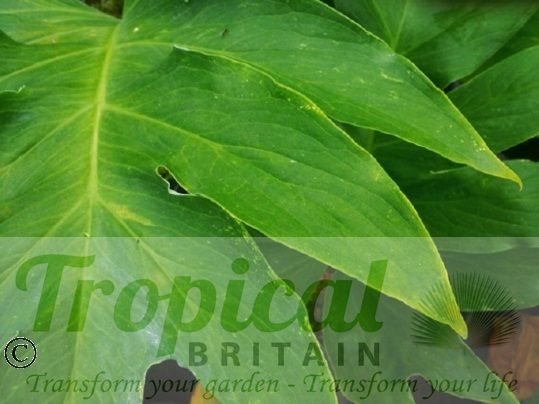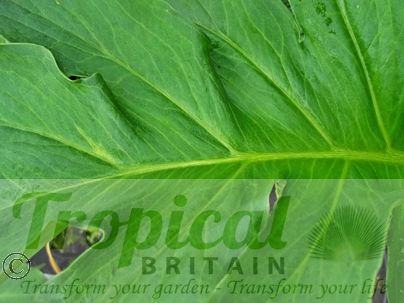Spathantheum orbignyanum is a rare aroid from the Andes where it is found at elevations of 2000-3000m in Bolivia and also in Peru and North-West Argentina. At these high elevations it experiences a cool dry temperate climate and providing it has excellent drainage it does very well in British gardens where its highly exotic foliage lends itself to jungle plantings in combination with other large-leaved foliage plants.
Its foliage dies down in October and in the warmer coastal south of the country it can be left in the ground over its winter dormant period. A gritty sandy bed for it to sit on over a freely-draining humus-rich soil will help to prevent the always lurking danger of the tubers rotting in the wet colder months. Its long dormancy period extends to May which - with the addition of a gritty mulch - is usually long enough in the far south to keep it from the frosts. In the rest of the country - and that is for most of us - it requires a slightly more cautious and traditional approach and should be lifted in the Autumn and stored totally dry until Spring. Dusting the lifted tubers with sulphur is a wise precaution against fungal infection during storage. In late April or early May the tubers can be planted out again, ensuring they have a gritty sandy bed to sit on above a rich substrate.
Growth is rapid once the summer is in full swing and its large exuberant foliage with a serrated deeply-cut bright green leaf is a real joy to watch unfold. Flowering-sized bulbs produce a characteristically bizarre inflorescence with a lime-green spathe nestling a spadix with many orange-yellow flowers. The spathe and spadix are adnate, meaning they are conjoined together, a feature which is relatively rare in aroids. The female flowers are at the base of the spadix and the male flowers are at the top with the region in between having rows of male flowers sandwiched between rows of female flowers.
This is a fantastic aroid for milder British gardens and one that I hope will be more widely grown in the years to come. It favours the moderate 'goldilocks' climate that is a British summer and although it grows on open rocky nooks in the Andes, in cultivation it is more suited to planting combinations with more 'jungly' foliage in either full sun or semi-shade.
Limited quantities. A bargain price for a rare species.
Additional Information
| Order | Alismatales |
|---|---|
| Family | Araceae |
| Sub-Family | Aroideae |
| Synonyms | Gamochlamys heterandra, Spathantheum heterandrum |
| Geographical Origin | South American Andes at elevations from 2000m to 3000m. Bolivia and also Peru and Northwest Argentina |
| Cultivation | Well-drained bed of gritty sandy gravel above a fertile and humus-rich substrate. Sun or half-shade |
| Eventual Height | 1m |
| Eventual Spread | 1m |
| Hardiness | Will overwinter outdoors in the coastal south and other warm pockets. Must have excellent drainage. Further north should be lifted and stored bone-dry until late April or May |
-
Nice sizeBigger than I thought it would be. Looking good.
Posted on

Free DELIVERY
ON ALL ORDERS OVER £99THIS OFFER IS VALID ON ALL OUR STORE ITEMS.











